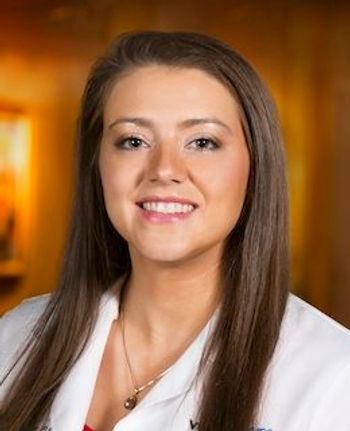
Pace picks up for developing risk stratification technology
The availability of effective treatment for exudative age-related macular degeneration has placed an onus on optometrists to be more aggressive in following AMD patients in order to provide timely referral when anti-VEGF treatment becomes indicated.
Key Points
"Despite advances in treatment for exudative AMD, it remains the leading cause of blindness in persons older than 65 years of age, and one of the reasons is that they are not being diagnosed early enough. When there were no good treatments for AMD, monitoring for progression with an Amsler grid was good enough. Because of low sensitivity for detecting early changes in macular function and poor patient compliance, however, early detection of conversion from dry to wet AMD is rare when relying solely on the Amsler grid," said Dr. Ferrucci, chief, optometry section, Sepulveda VA Medical Center, Sepulveda, CA.
"Hopefully, with new diagnostic technology, we can do a better job identifying patients when they are most likely to benefit from treatment," he added.
PHP, which uses Vernier acuity, is an easy, relatively fast, automated, noninvasive test shown in various studies to be far superior to Amsler grid testing for detecting early conversion to wet AMD and almost equivalent in its performance to fluorescein angiography.
Now available in an at-home version (Fore see Home, Notal Vision), PHP connects to a monitoring system that sends a message to alert the patient's doctor of a suspected change.
"Using PHP we can detect subtle changes in macula function corresponding to conversion from dry to wet AMD at time that treatment is most likely to be successful-when the lesions are relatively small," he said.
"The home testing device may not have wide application, but it might be something to consider especially for a patient who has already experienced significant AMD-related vision loss in one eye," Dr. Ferrucci said.
A device that measures macular threshold sensitivity through microperimetry (Macular Integrity Assessment, CenterVue/Ellex) has potential for aiding the early diagnosis of macular changes in AMD or other macular pathologies. The platform has three test modes-a fast screening test, an expert test that can be performed if changes are detected in the screening test, and a follow-up test intended for use in ongoing monitoring.
Predicting risk
Testing of macular pigment optical density to determine risk for AMD has also been around for several years. Currently, two macular pigment densitometry platforms are commercially available (MacuScope, Marco Ophthalmic Inc. and QuantifEye, ZeaVision LLC) with a third unit expected to be released.
Because low macular pigment density is a risk factor for AMD and is responsive to changes in diet and supplement intake, use of this test to identify at-risk patients can hopefully allow them to benefit from interventions designed to modify their risk.
"This is a quick, easy test and when used for serial monitoring in patients started on a supplement because of low macular pigment density, can help raise awareness about the benefits of the intervention," Dr. Ferrucci said.
Newsletter
Want more insights like this? Subscribe to Optometry Times and get clinical pearls and practice tips delivered straight to your inbox.


















































.png)


